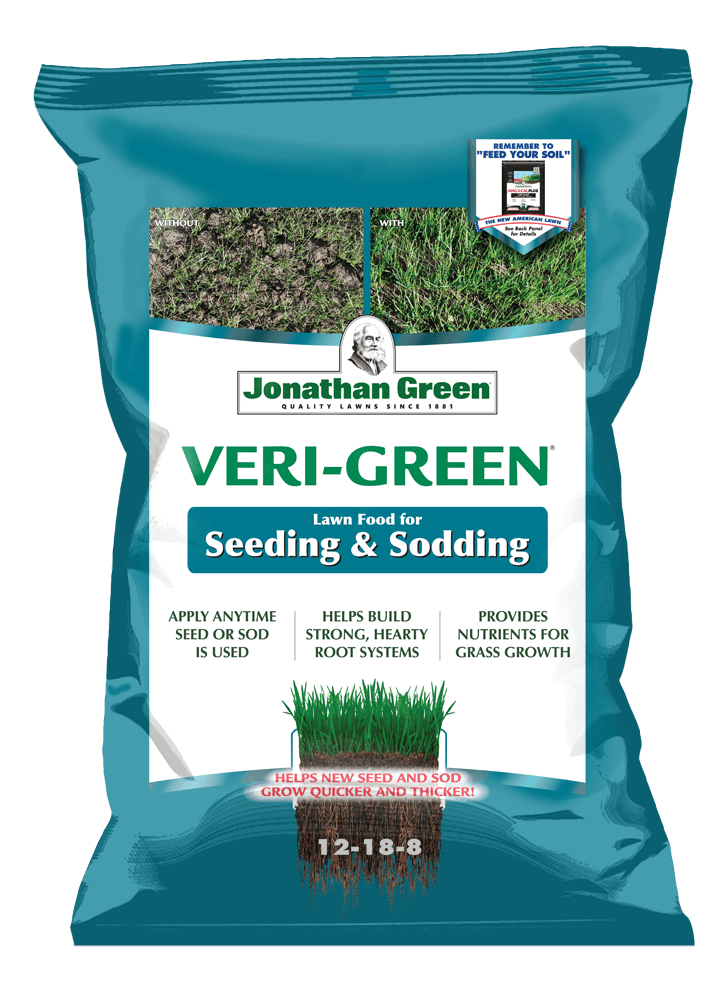How to Plant Grass Seed on Existing Lawn
To “overseed” means to plant new grass seed over an existing lawn. Get some tips from the experts at Jonathan Green on when to overseed and how to prepare the soil, correct any problems, and choose the best grass seed mixture, in order to produce a healthy, great-looking lawn.
Since 1881, Jonathan Green has specialized in beautiful lawns. Six generations of the Green family have worked to perfect our genetically superior grass seed and our family of lawn and soil care products. Jonathan Green products will transform every aspect of your lawn to help it thrive like never before, and, with our New American Lawn Care Plan, you will find it easier than ever to care for your lawn.
When to Overseed Your Lawn
The best time to overseed your lawn with cool-season grasses, like Jonathan Green Black Beauty grass seed, is late summer to early fall (ideally mid-August to mid-October). At this time of year, the soil is still warm, which will help with seed germination, and the cooler air temperatures and rainfall are great for grass growth. Overseeding lawns in fall also reduces competition from summer weeds such as crabgrass. The second-best time for overseeding is in early spring (mid-March to mid-May).
Choose the Best Seed
Choosing the right grass seed is also an important element of successful overseeding. Used by leading sod growers across the country, Jonathan Green’s genetically superior Black Beauty® grass seed creates a lawn full of grass that:
- Is deep-rooted (grows roots up to 4 feet deep);
- Has an invisible waxy coating (like the waxy skin on an apple) to ward off disease and lock in moisture;
- Has lush, dark green leaves that are uniform in texture;
- Grows well in full sun and partial shade;
- Is drought-resistant;
- Is endophyte-bred for natural insect resistance.
Prepare the Soil for Overseeding
Seeds have to come in contact with the soil in order to germinate. Clear out dead grass and debris and loosen compacted soil with a rake or garden weasel to about a half-inch deep to encourage maximum contact. This will give the roots the best chance to grow. If you have a large lawn, consider renting a slit seeder, aerator, or de-thatching machine.
Test the pH of the soil. Lawns grow best in soil that is slightly acidic to neutral (between 6.2 and 7.0 on the pH scale). Jonathan Green’s MAG-I-CAL® Plus comes in two formulas – one for acidic soil and one for alkaline soil – and will correctly balance the pH to help your lawn grow greener and healthier.
You should be ready now to overseed the lawn. If your lawn is small, you may be able to broadcast the seed by hand, but do so carefully by throwing the seed out in front of you Don’t throw down a handful of seed in a small area! This causes too many seeds to sprout and creates competition which will set you back in the long run.
When too many grass plants are vying for air, water and nutrients, the new grass seedlings will eventually thin out and some will die so others may thrive. For larger lawns, a lawn spreader is the best way to cover a lot of ground quickly and achieve even and accurate coverage. If you are overseeding a thinning lawn, raking in the seeds is not necessary because they will move between the blades of grass.
Now is also a good time to apply Veri-Green Starter Fertilizer for Seeding & Sodding. Our high phosphorus formula helps build a vigorous root system and will get your new grass plants off to a fast start.
Mentioned Products
To learn more about how and when to plant grass seed on an existing lawn, visit Jonathan Green online, or find a local independent retailer near you.
